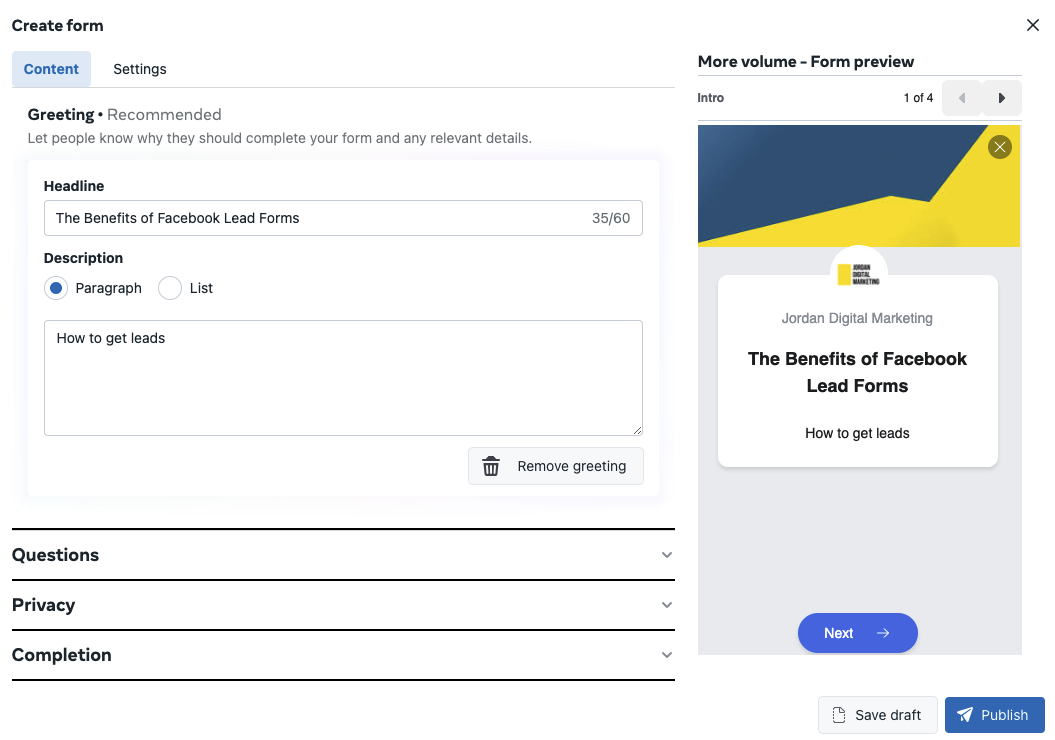We’ve covered best practices for B2B marketing on Facebook in the past for good reason: B2B advertisers are always eager to find cost-effective alternatives to LinkedIn’s high CPCs. The reality remains that LinkedIn targeting options for B2B are the best among native ad platforms…but the gap is closing.
In short, whether or not you’ve tested Facebook B2B advertising before and thrown up your hands at the (lack of) lead quality, it’s time to take another hard look. In this post, we’ll cover why—and how—to give Facebook (and Instagram!) B2B ads another shot.
Why should B2B marketers explore Facebook ads (again)?
Have we mentioned Facebook engagement costs are cheaper than LinkedIn’s? Like, a lot cheaper. Cheap enough (I’ve personally seen <$4 CPLs) to keep a close eye over the years on developments that might improve actual lead quality and keep spam from choking your CRM. In today's marketing landscape, you can never be too cautious when finding ways to avoid wasting your marketing dollars.
Yes, platforms like LinkedIn will have better targeting options for B2B, and LinkedIn users are far more conditioned in the moment than Facebook users to engage with B2B content. That said, strong lookalike audience lists are starting to perform on Facebook and Instagram (and we’ll get into how to set those up in a bit).
What are the options for B2B marketers on Facebook?
Besides lookalikes and retargeting, lead gen can work a lot like it does on LinkedIn: ads that allow users to fill in and submit info without leaving the platform. This means that the barrier to entry is low (it also ensures that Facebook gets user data, which may be more of an issue as user trust erodes).

Yes, you’ll still get plenty of spam in your system. Although you will see Closed-won results, you’ll also still need to do cleanup, both in your CRM and your campaigns. For campaign lead quality optimization purposes, we keep audiences separated by ad set so we can pinpoint where most of the spam is coming in.
How do you optimize targeting on Facebook?
Facebook’s fundamental B2B targeting flaw is that people simply don’t update their professional info like they do on LinkedIn. Finding an actual decision-maker for an actual company within your ICP using only Facebook user data is no small feat. With that understood, we highly recommend that you add additional fields (e.g. company name) to your lead gen form to pre-qualify leads as they come through. Add customized questions (“Do you control a marketing budget of $XX?”) as well to ease the filtering burden on your BD team. This will add barriers to entry to deter people from spammy auto-form fills. Your lead costs will rise, but your quality lead costs (a MUCH more reliable metric) shouldn’t.
On the retargeting front, you can’t simply port lists over from LinkedIn, but you can use a provider like Primer or Clearbit to get prospecting lists and enhance the data for your database of existing leads. You can also use customer match lists or retarget people who have already taken some kind of action like engaging with your Facebook content or visiting your site.
How should you structure a test on Facebook ads for B2B?
Typically, we segment ad sets by audience and run tests at the ad set level. To stand something up, we use a few creative and messaging options customized to our target audience, and we let the platform optimize according to engagement (side note: you’ll want to monitor comments to make sure to flag anything negative/offensive). This isn’t a traditional A/B test; it relies on Facebook’s machine learning to figure out what’s working and where to focus.
What kind of follow-up (sequence, etc.) do you recommend to gauge lead quality for Facebook ads?
You want to make sure that if you’re using the lead gen forms, they flow into the CRM properly and go into a drip sequence that aligns with the form’s CTA (e.g. book a demo, subscribe to our newsletter). Warm users up into a flow with content if that’s what they’re signaling, and make sure you’re aligned with your BD team (or the client’s BD team) on next steps post-form fill.
Speaking of alignment, make sure you have a tight, regularly scheduled communications loop with the BD team to keep a close eye on both lead quality and expectations for leads that come in. Rare is the Facebook lead that will convert into a customer without plenty of nurturing, especially since Facebook doesn’t (yet) have good in-market targeting. Plan to engage, build awareness, build trust, and stake out a top-of-mind position for when the time is right.
What kind of role (if any) do you see for Instagram for B2B ads?
We’ve actually achieved more engagement at scale on Instagram than Facebook recently. As you’d imagine, Instagram relies more heavily on effective creative (we typically build creative according to the ad placement and don’t just rely on standard 1080x1080 Feed imagery). Video, especially on Instagram, can be especially impactful with Stories, and UGC (user-generated content) has proven powerful on both Facebook and Instagram.
Any other considerations to take before testing Facebook for B2B?
More than with LinkedIn, Facebook B2B advertising relies on a tight verification and feedback loop. Marketers should make sure they can tie results back to ad sets and campaigns without waiting for the entire sales journey to result in a closed-won. The upside to this is that Facebook’s scale can give you a good idea of directional success much more quickly than LinkedIn can, and you can even transfer Facebook-driven findings on effective audience signals, messaging, and list segmentation to LinkedIn. (How’s that for flipping the narrative?)
The upshot: if you set things up well, analyze frequently, communicate clearly across teams, and react quickly to the data, Facebook for B2B can work. Give it a shot yourself or let us know if you want a helping hand along the way.